|
HOME: www.hiltonpond.org |
|||
THIS WEEK at HILTON POND Subscribe for free to our award-winning nature newsletter (Back to Preceding Week; on to Next Week) |
All text, maps, charts & photos © Hilton Pond Center 2017 BIRD BANDING SUMMARY: --THUMBNAIL RESULTS-- We try each year to band at least 2,000 birds at Hilton Pond Center but finished a little shy of the mark in 2017, in large part because winter finches didn't arrive in their usual big numbers this fall. (A cornucopia of natural food crops across Canada apparently made it unnecessary for non-obligate migrants such as Purple Finches and Pine Siskins to come south.) Thus, we ended up with 1,941 bandings--slightly less than 2,000 but above our 36-year average of 1,857.9 individuals banded. The just-ended year's biggest numbers came from four species: American Goldfinch (527, with only 54 banded in fall or early winter), Purple Finch (223, all banded on or before 2 April), House Finch (284, just shy of the 26-year average of 286; photo of adult male above), and our second-highest total for Ruby-throated Hummingbirds (298, exceeded only by 373 in 2016); these four combined for 1,223 individuals, or 63% of the annual total. In all, 65 species crossed our banding table in 2017--about half the 126 species banded here since 1982 and our best diversity since 66 species in 2008. We had hoped to reach the 67,000 total-bird mark in our 36th year at Hilton Pond but ended up short at 66,885.
All text, maps, charts & photos © Hilton Pond Center Certainly the most devastating thing to happen to flora and fauna in our 36 years at Hilton Pond began shortly before Thanksgiving 2017 when a contractor for the South Carolina Department of Transportation moved in with heavy equipment and began clearing a roadside right-of-way 33 feet from the center line of DeVinney Road that fronts the Center. Incredibly, mature 60-foot oaks and pines that were 50-100 years old were all of a sudden the target for monstrous, deafening grinding machines that reduced everything in their reach to sawdust and wood chips. The destruction was difficult to watch and made us (and our neighbors) both angry and sad for many reasons--not the least of which was it scared away birds for more than a month.
All text, maps, charts & photos © Hilton Pond Center Purportedly in the name of highway safety the astoundingly efficient equipment operated nearly all of December, turning our road frontage into something that now resembles a war zone. Gone are many big trees--including ALL the tall ones at right in the photo above--that once offered shelter, food, and nesting sites to birds and small mammals AND that partially buffered the Center from highway traffic noise. Equipment operators somehow managed to damage or kill trees more than 60 feet away from the roadway's mid-line--vegetation that once stood harmlessly in the Center's "front yard." Alas, all that remains of dozens of once-stately trees are unsightly four-foot-high mounds of wood chips that as of this writing [mid-February 2018] the highway department has not cleaned up. War zone indeed! Although this unprecedented tree removal doesn't change the overall charm and beauty of Hilton Pond Center, it almost certainly will affect various on-going research projects we've been conducting for nearly four decades . . . including our long-term bird banding studies. Nature may slowly rebound through all those deep piles of mulch, but we're not sure we have another 36 years to wait. All text, maps, charts & photos © Hilton Pond Center
All text, maps, charts & photos © Hilton Pond Center --BACKGROUND INFO-- Through the years we have observed fewer and fewer birds free-flying at Hilton Pond Center, which certainly influences overall banding success. Banding tallies in 2017 were appreciably lower not only because of fewer winter finches that would have swelled our numbers but because weather during much of the year didn't allow us to deploy mist nets: Spring (17 March, above) was quite rainy and summer was too hot and cloudless, followed by unusually windy conditions almost daily from July through September. Once again, autumn brought drought conditions and many local birds seemed to disappear--as did much of the water in the pond. (And, as described above, December was a bust for banding because of noisy, disruptive tree removal along the Center's highway frontage.)
All text, maps, charts & photos © Hilton Pond Center For the sake of bird welfare we don't open our nets when it's too hot for us OR the birds (above 90 degrees or so) or below 40 degrees . . or when it's windy . . or in the rain. Thus, weather limits our work and differences year-to-year at the Center have definite impact on banding results. (Regardless of weather, we're careful to check nets frequently and remove birds before they incur any damage. That's a previously banded Carolina Wren in the photo above--a permanent resident "banding junkie" we've recaptured many times in nets and traps.)
All text, maps, charts & photos © Hilton Pond Center On top of weather influences we also missed the Center's prime spring migration week by banding, speaking, and guiding at the New River Birding & Nature Festival in Fayette County WV--which nonetheless we NEVER regret. And, as usual, banding activity at Hilton Pond shut down for 2-7 days on several occasions throughout the year when the bander was out of town for consulting work or other speaking engagements. (Trips included our first visit to Oxford MS to present talks about our Neotropical research for the annual Strawberry Plains Hummingbird & Nature Celebration, above. This came in early September--right at the peak of fall hummer migration at Hilton Pond.) We can't complain about these off-site activities because they and on-site Guided Field Trips yield much-needed revenue that allows us to operate Hilton Pond Center and Operation RubyThroat on a shoestring. (We also get much-appreciated support from individual donors such as those acknowledged at the end of this and every installment of "This Week at Hilton Pond.") Nonetheless, we doubt even 12 full months of banding this year would have enabled us to reach our all-time highs of 95 species and 4,061 individuals set 'way back in 1991. Those WERE the days!
All text, maps, charts & photos © Hilton Pond Center In 2017 when we WERE present at the Center (see plat above) we almost always ran a few sunflower seed traps for songbirds (locations A, B & C), and late March through mid-October we concentrated on Ruby-throated Hummingbirds coming to sugar water traps at those three locations. When weather and time allowed, we typically deployed 6-8 mist nets just outside the old farmhouse and office (larger red box on map) where we could keep a close eye on them. During spring and fall migration periods we sometimes ran additional nets--up to 16--at various spots along outlying nature trails (D thru Z). We do not tally net- or trap-hours at Hilton Pond Center--we find this accounting too complicated because of the way we have to operate--so we can't compare actual banding effort from one year to the next. Despite any annual variations in bander activity, things more or less "average out" over time, and our long-term banding studies still help us gain better understanding of nature trends in here in the Carolina Piedmont.
All text, maps, charts & photos © Hilton Pond Center Year-to-year differences in net- and trap-hours DO affect our banding results, but of greater significance is the way the landscape at Hilton Pond Center has changed during 36 years we've worked and resided here. When we purchased our 11-acre plot in 1982 it was almost all open (above), the result of a century of agriculture that apparently involved cattle grazing and row crops such as corn, cotton, tobacco, and soybeans. We decided early on we would NOT be spending our time--or wasting energy or natural resources--cutting 11 acres of grass, so we allowed the land to go fallow, maintaining only a couple of small "meadows" and three-foot-wide, easily navigable nature trails that meander for nearly two-and-a-half miles around the property.
All text, maps, charts & photos © Hilton Pond Center Under our laissez-fair philosophy of land management, vegetational succession ensued and local habitats passed through stages, first from old field to shrub land--mostly invasives such as Chinese Privet and Russian Olive--and then to Eastern Red Cedar stands. Eventually the cedars were shaded out, transitioning to our current young forest of pine and sundry hardwoods with minimal shrubs or herbaceous ground cover. An aerial photo of Hilton Pond Center from March 2012 (above) shows how thoroughly the land has become covered by woody vegetation--mostly fast-growing Loblolly Pines on the north edge and hardwoods between the two ponds and on the southern half and eastern end of the property.
All text, maps, charts & photos © Hilton Pond Center Deciduous trees these days at the Center are primarily Winged Elm and Sweetgum, with a scattering of Black Cherry, Green Ash, Hackberry, Flowering Dogwood, and various oaks and hickories. Just as vegetation has changed (current photo, above), so has local bird life; with regard to banding, many species that hung out in vegetation close to the ground where our mist nets could snare them now fly uncaptured in treetops high above.
All text, maps, charts & photos © Hilton Pond Center Speaking of vegetational change, Google Earth posted an aerial image from October 2014 that shows Hilton Pond Center's old farmhouse and the massive 150-year-old White Oak (above left) that toppled in September of that year. We feel quite certain loss of this ancient canopy tree had a negative impact on Center avifauna, but unlike the roadside tree destruction described above it was a natural occurrence. On the positive side, the big oak's absence has created a "hole in the sky" that provides a better view of sunsets AND of birds flying over. All text, maps, charts & photos © Hilton Pond Center All text, maps, charts & photos © Hilton Pond Center (Click on chart above for a larger version in a new browser window) --2017 BANDING DETAILS-- As depicted on the chart above (click on it to open a larger version in a new browser window), 2017 ended with 1,941 birds banded from 65 species for Hilton Pond Center. These numbers were above the 36-year average of 1,857.9 individuals (dotted white line) and close to the species average of 65.3. (Dotted red and blue trend lines continue to show a decline in both categories.) This year's bird total was less than half what we caught in our big year of 1991 (4,061 individuals), and diversity didn't come close to the 95 species we caught that same year. At least some of this discrepancy between decades is due to a big shift in vegetational cover noted above--it was in the mid-1990s when the Center's previously open areas were becoming dominated by young trees. It's likely epidemic West Nile Virus in that decade also took its toll, especially on birds such as Blue Jays, Eastern Towhees, and various sparrows. (Surveys in many locales near and far show fewer birds in the world due to diverse factors, from uncontrolled hunting to environmental toxins and from climate change to devastatingly efficient free-roaming cats. But, as always, the biggest problem is human-generated habitat loss.)
All text, maps, charts & photos © Hilton Pond Center These days, shrub-loving birds like Gray Catbirds, Eastern Towhees, Brown Thrashers, and many sparrows are almost non-existent around Hilton Pond. Even supposedly "common" Northern Cardinals (banded male, above)--which prosper along edges and in shrub-dominant landscapes rather than in woodlands or open meadows--continue to show drastically diminished numbers after peaking during the "shrubby years" of the early 1990s. In fact, our 73 NOCA banded in 2017 was only half the 157 captured in 1993. The loss of Eastern Red Cedars that died as they got shaded out by successive hardwoods might also have been a factor because cardinals frequently nested in the cedars' dense evergreen foliage.
All text, maps, charts & photos © Hilton Pond Center It did not help our local bird life that back in 1996 an adjoining farmer to the north of the Center clear-cut about 75 acres of mature Loblolly Pines and converted the land to pasture for beef cattle. This brought about a near-instantaneous drop in numbers of species that breed, feed, roost, or winter in pine lands, and populations declined drastically among numerous breeding species including Blue Jays (above), Brown-headed Nuthatches, and Pine Warblers Unfortunately, Grasshopper Sparrows and Eastern Meadowlarks that now nest in the farmer's open field don't wander onto our wooded property; we've banded only two of the former and one of the latter in 36 years! All text, maps, charts & photos © Hilton Pond Center (Click on chart above for a larger version in a new browser window) Despite habitat disruption and vegetation change, we continue to capture a significant number of birds at Hilton Pond Center. In fact, this year one member of our 26-species "400 Club" (click on chart above for a larger version)--the aforementioned Carolina Chickadee--was elevated to the somewhat more lofty "600 Club. As shown on the chart just above, the Center's 26 most commonly banded species continue to be dominated by the four "winter finches." Since leaping atop the totals list in 2014, American Goldfinches have stayed ahead of House Finches--in decline since their banner years in the late 1980s--while AMGO numbers are on the rise locally.
All text, maps, charts & photos © Hilton Pond Center Of special interest concerning American Goldfinches is their apparent increase during the nesting season--perhaps an indication they are expanding their breeding range across the South Carolina Piedmont. Purple Finches round out our "8,000 Club" at 8,631, with 223 banded in early 2017 (none in fall). Pine Siskins (above) were completely absent in 2017, and with just ten banded last year they haven't been keeping up with their fellow finches. (Siskins are an irruptive species whose variable numbers in the Carolina Piedmont likely, at least in part, are the result of how much food is available further north.) It's worth noting that just the four winter finches--represented by BLUE columns on the chart above--total 33,156 bandings, or almost half (49.57%) of all birds banded at the Center. This year on 19 April these four species reached an all-time-high composite total of 49.85%--pretty darn close to half all birds we've banded at Hilton Pond Center.
All text, maps, charts & photos © Hilton Pond Center Folks often ask: "What's the most unusual bird you banded this year at Hilton Pond Center?" We're never quite sure how to answer except to look at numbers and respond with the name of a bird we seldom band. Using that criterion, the sole Yellow-breasted Chat (above, female) caught during fall migration would be one of 2017's "rarities." Chats were considerably more common at the Center during those early years when the pond was lined with shrubs rather than trees. (We've banded 136 in 36 years.)
All text, maps, charts & photos © Hilton Pond Center In all we had 17 species for which we caught just one individual in 2017: Red-winged Blackbird (27 total since 1982, photo above of adult male); Yellow-bellied Sapsucker (46 total); Great Crested Flycatcher (53 total); Blue Grosbeak (69 total); Golden-crowned Kinglet (164 total); Northern Mockingbird (173 total); Veery (100 total); Red-eyed Vireo (360 total); White-eyed Vireo (324 total); Blackpoll Warbler (127 total); Chestnut-sided Warbler (83 total); & Yellow-bellied Sapsucker (46 total).
All text, maps, charts & photos © Hilton Pond Center Of these the two vireos were most surprising, but we also banded just ONE Dark-eyed Junco this year--even though it is our 13th most common species with 836 banded. (Where HAVE all the juncos gone?) Also elusive in recent years has been Brown Thrasher (one this year, 501 total). In the end if we have to pick our "rarest" species for which we caught just one bird in 2017 they would be Yellow Warbler (22 total since 1982, photo above) and Yellow-throated Warbler (just 11 total, photo below). It's interesting we have caught at least twice as many Yellow Warblers on our Costa Rica hummingbird study sites than at Hilton Pond Center!
All text, maps, charts & photos © Hilton Pond Center --2017 FOREIGN ENCOUNTERS, RETURNS & RECAPTURES-- Two of our banded birds were found or recaptured elsewhere and reported to the federal Bird Banding Lab in 2017. One was an adult female Mourning Dove banded on 9 January at Hilton Pond and legally shot three miles south on 2 September (the first day of dove hunting season).
All text, maps, charts & photos © Hilton Pond Center The other in-county encounter was a late report of a young Barred Owl banded locally in July 2016 (that's the actual bird above at time of banding) and killed by a car back on 23 December 2016 about five miles to our southeast. We originally caught this owl when it became temporarily caught in the mono-filament leading to one of our pull-string hummingbird traps. It was one of only three Barred Owls banded at Hilton Pond Center in 36 years. (The other two were caught in mist nets in broad daylight!)
All text, maps, charts & photos © Hilton Pond Center Our furthest known flier on record was a brown Purple Finch (file photo above) of unknown age banded at the Center in Feb 2004 and encountered two months later at Monastery, Nova Scotia because it had been killed by a cat. This was a sad way to end a northbound migration route that covered at least 1,275 air miles. After banding 66,885 birds during 36 years at Hilton Pond Center, only 61 individuals (14 species) were encountered outside our home county of York, while an additional 39 (13 species) were reported from within the county. (Click on links to review either list.) We speculate such low foreign encounter rates are due in part to the relative scarcity of banders in the southeastern U.S. and the mostly rural nature of both Carolinas; fewer banders, fewer people, and large swaths of undeveloped land mean banded birds are less likely to be encountered.
All text, maps, charts & photos © Hilton Pond Center Despite a low foreign encounter rate, many birds banded at Hilton Pond Center have returned in later years, providing valuable information about species longevity and site fidelity. (Of 121 species banded locally, 62 species have been recaptured in a later year.) Most notable was a Purple Finch banded as unknown age and sex on 13 March 2009, recaptured upon return on 20 February 2017. Since he bore red plumage this year (see photo above), that means he is a male that must have hatched in 2009--a TENTH year bird. This ties our record for oldest known bird of any species at Hilton Pond.
All text, maps, charts & photos © Hilton Pond Center Other notable recaptures at Hilton Pond Center in 2017 include:
All text, maps, charts & photos © Hilton Pond Center ••2017 RUBY-THROATED HUMMINGBIRDS•• All text, maps, charts & photos © Hilton Pond Center (Click on chart above for a larger version in a new browser window) Because Ruby-throated Hummingbirds are our primary research interest here and in Central America, we were quite pleased with how things went in 2017 at Hilton Pond Center. After a phenomenal record-breaking year in 2016 (see chart above)--when our 373 RTHU bandings obliterated the previous high of 246 from 2015--we still ended up with our second-best year: 298 hummers banded. (Had we been on-site for fall migration in early September instead of presenting at a festival in Mississippi we likely would have gone over the 300 mark.) To be honest, we are at a loss to explain this sudden two-year spike in RTHU numbers at the Center. We don't think we're doing anything different with regard to netting, trapping, and banding. Howeever, we HAVE increased the number of sugar water feeders we're maintaining from 14 to 20, but we can't imagine that would have such significant impact on our local population. All text, maps, charts & photos © Hilton Pond Center (Click on chart above for a larger version in a new browser window) The 2017 Ruby-throated Hummingbird research season started off rather slowly at Hilton Pond Center; its progress is marked by the red dotted line on the chart above. Our first new capture on 27 March tied the early record held in three previous years (1991, 2011 & 2014--all adult males), but the next two new birds did not arrive until 10 April. Unbanded hummers continued to trickle in: One each on 17, 27 & 29 April, after which we banded no new RTHU until 15 May! The white dotted line on the chart represents average day-to-day hummingbird banding progress through the years at the Center. Things started to pick up in late May, but not until mid-July did hummer progress finally take off. By 22 July our 2017 Ruby-throated Hummingbird bandings had tied the previous fastest rate set last year, although it did taper a little until the beginning of the second week in September. We ended the season with a mind-boggling 127 RTHU banded just in September that included 36 on the 11th--an exhausting new one-day record for Hilton Pond Center. [This "glut" of hummers on September 11 was likely the result of two factors: 1) Light rain fell most of the day, perhaps driving more birds to traps containing sugar water feeders; and, 2) We had not banded in the preceding four days because we had been away to lecture at the Mississippi hummingbird festival.] As usual, we banded very few RTHU in October--this year only two, on the 1st and 4th. (Our latest ever was 18 October 1986.)
All text, maps, charts & photos © Hilton Pond Center After the Center's first spring capture of a male Ruby-throated Hummingbird (above) on 27 March, the first new female didn't appear until a month later on 27 April. This was an extreme discrepancy, since first females usually arrive a week or more behind first males. (The first return of a BANDED RTHU in 2017 was a male on 28 March; the first returning female wasn't trapped until 16 May.)
All text, maps, charts & photos © Hilton Pond Center All Ruby-throated Hummingbirds captured--or recaptured--at Hilton Pond Center are banded and then marked with a temporary green color mark (see female above). This helps us avoid recapturing "trap junkie" hummers that re-enter our pull-string traps over and over and over again. In spring it also means folks north of us can be alert for color-marked RTHU; in autumn those to our south can be on the lookout. If you see any color-marked hummingbird, please report it to us immediately at RESEARCH; a photo would be most helpful. All text, maps, charts & photos © Hilton Pond Center (Click on chart above for a larger version in a new browser window) With total hummer bandings for 2017 almost reaching 300 at Hilton Pond Center, we would logically expect many more hatch-year RTHU among our banded birds. During 28 complete field seasons (left pie chart, above), 71.6% of all ruby-throats banded have been recent fledglings; however, in 2017 (right pie chart) they made up 77.6%. Our 127 hatch year males (pale blue on chart above) made up 42.5% of all bandings in 2017--very close to the 34-year average; only a record 188 young males banded last year exceeded this year's number. This year's 105 young female Ruby-throated Hummingbirds were likewise surpassed only by the record of 120 in 2016.
All text, maps, charts & photos © Hilton Pond Center This abundance of youngsters (immature male above, color-marked and with incomplete red gorget) at Hilton Pond Center suggests the breeding season was much more successful than usual for Ruby-throated Hummingbirds here, and maybe elsewhere. By default, percentages of adult males and females were lower than average; this was skewed further by a below-average scarcity of mature males (just 27 in 2017, compared to an all-time high of 60 in 2015), but 40 mature female RTHU this year approached the record high of 47 from 2007. All text, maps, charts & photos © Hilton Pond Center (Click on chart above for a larger version in a new browser window) Along with the Center's near-record numbers of new Ruby-throated Hummingbirds in 2017, we had our all-time best year for returns of RTHU banded in previous breeding seasons (see chart above). In fact, our 62 "old birds" this year was well above the 34-year average of 29 and shattered the old record of 49 from 2007. To be honest, we anticipated a bumper crop of returns in 2017 because of the record-breaking number of RTHU we banded the preceding year. The dotted red trend line on the chart above shows RTHU returns are increasing at Hilton Pond Center--to be expected because our numbers of new bandings are also on the rise. On average, about 11% of all ruby-throats we band locally return in at least one later year--a substantial subset when we consider that somewhere around 60% to 80% of young birds produced each year do not survive due to disease, genetic defects, predators, environmental dangers, and rigors of migration.
All text, maps, charts & photos © Hilton Pond Center Of this year's 62 RTHU returns at Hilton Pond Center (see list below), 47 were banded last year (2016), six in 2015, and nine in 2014. In all, 15 returnees were in at least their third year. The apparent oldest were three females banded as after-hatch-year in 2014 and have become after-4th-year. It's entirely possible some of these could actually have been even older than that; the Bird Banding Lab's record for oldest wild Ruby-throated Hummingbird is 9+ years. ••"Old" Ruby-throated Hummingbirds Returning in 2017••
It is interesting that only two of the old birds listed above are males. We can think of several possible explanations (or combinations thereof) for this gender-related discrepancy: 1) "Old" males are "smart" enough to avoid the hummingbird traps with which we capture (and re-capture) the majority of our ruby-throats at Hilton Pond Center; 2) Male hummingbirds survive at lower rate than do females and thus are unable to return for recapture; 3) Males may disperse to other locations--perhaps because of territorial disputes--thus avoiding recapture; and, 4) Or something else entirely. We'd be happy to hear your hypothesis on what might be happening here; just send an e-mail to INFO. (NOTE: Although we looked for her every day spring through fall we did not recapture Ruby-throated Hummingbird #Y15972, a female banded locally as a hatch year bird on 31 August 2006 and recaptured every year through 2013 when she was in her eighth year.) Even though we have banded 5,971 Ruby-throated Hummingbirds since 1984 and have a multitude of local returns, only six have been encountered elsewhere. Our color-marked RTHU from the Center have been seen during fall migration in Atlanta, Louisiana, and Alabama (two individuals), while spring migrants were reported from Massachusetts and Clover SC (about ten miles north of Hilton Pond).
All text, maps, charts & photos © Hilton Pond Center After studying Ruby-throated Hummingbirds at Hilton Pond Center for more than three decades, we still find it remarkable a tiny bird the size of one's thumb can survive a long-distance migration (map above) to the Neotropics and return to precisely the same locale in York, South Carolina--not just once but for multiple round trips. Such site fidelity is truly one of nature's great wonders. All text, maps, charts & photos © Hilton Pond Center ••2017 "YARD LIST" & NESTING SPECIES•• Our "Yard List" of birds seen through the years on or over Hilton Pond Center remained at 171 through 2016, the most recent new YARD species coming five years ago when we observed (and banded) eight Savannah Sparrows during a January 2011 snowstorm. (Our newest BANDED species--#126--was a Barred Owl in April 2012; this species had been seen in numerous previous years.) During 2017 we saw or heard a total of 88 bird species--12 more than last year but barely half (52%) the birds observed locally since 1982. We find it interesting that of 38 North American Wood Warblers LIKELY to be seen at Hilton Pond Center, we have observed and banded 35 of them. The missing species are Cerulean Warbler and Mourning Warbler (both inland migrants) and the endangered Kirtland's Warbler. (The other 14 extant North American parulids are western species not likely to occur in South Carolina's Piedmont Province. Bachman's Warbler--now extinct from the Carolina Lowcountry--can no longer be seen anywhere except museums.)
All text, maps, charts & photos © Hilton Pond Center Among all species encountered at the Center since 1982 we've found nests for 25, including Carolina Chickadees (above) that often lay their eggs in a box intended for Eastern Bluebirds. Those boxes prove pretty hand and also have been used by Tufted Titmice, House Wrens, and Brown-headed Nuthatches. A Prothonotary Warbler even tried building a nest in one before a dominant bluebird pair drove him away.
All text, maps, charts & photos © Hilton Pond Center Incidentally, on a year-round basis we offer local birds lots of food, primarily black oil sunflower seeds (above, with American Goldfinch, Carolina Chickadee, and Eastern Tufted Titmouse), plus white millet, cracked corn, shell corn, thistle (Nyger), dried mealworms, bark butter, and various suet blocks; we also maintain at least two dozen feeders with sugar water for hummingbirds. Perhaps of more importance, Hilton Pond itself and several smaller artificial pools provide places for birds and other wildlife to drink and bathe. Accessible clean water often brings in more birds than does food--especially in winter when some drinking sources are frozen solid. This is why at least one of our artificial water features is always equipped with a cold-weather heater. All text, maps, charts & photos © Hilton Pond Center ••2017 SUMMARY•• A complete list of 1,941 birds of 65 species banded at Hilton Pond Center in 2017 is provided in the table below. One species--Bay-breasted Warbler--set a new high (five banded, previous record was three), while Winter Wren tied its high of two. Another 27 species (green type in the table) were banded in numbers at or above their 36-year-average. The remaining 97 species (black type) came in with below-average numbers this year, or with none banded at all.
All text, maps, charts & photos © Hilton Pond Center We invite you to examine and dissect the table for trends or to see whether we captured your favorite species--perhaps a male Red-bellied Woodpecker like the banded one above. There really is a lot to be said for long-term banding projects like ours that provide solid baseline data leading to better understanding of avian ecology. We're proud to report we've been at it since 1982 at Hilton Pond Center--to our knowledge still the most active year-round banding station in the Carolinas. All text, maps, charts & photos © Hilton Pond Center
TABLE 1: ANNUAL (2017) & CUMULATIVE (36-year)
All text, maps, charts & photos © Hilton Pond Center 
Checks can be sent to Hilton Pond Center at: All contributions are tax-deductible on your |
|---|
|
"This Week at Hilton Pond" is written and photographed by Bill Hilton Jr., executive director of Hilton Pond Center for Piedmont Natural History
|
|
|
Please refer "This Week at Hilton Pond" to others by clicking on this button: |
Comments or questions about this week's installment? Send an E-mail to INFO. (Be sure to scroll down for a tally of birds banded/recaptured during the period, plus other nature notes.) |




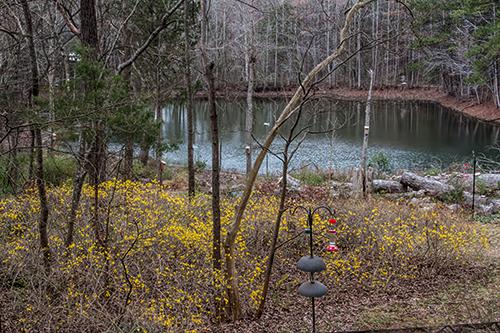
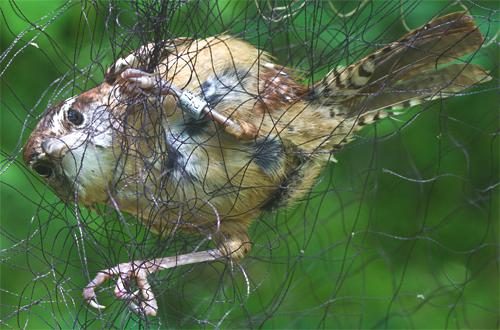


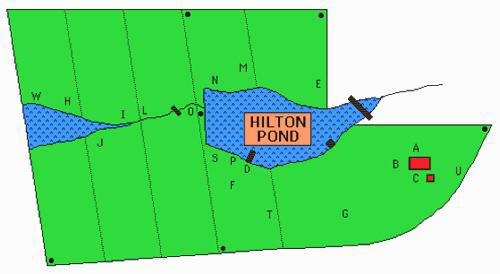
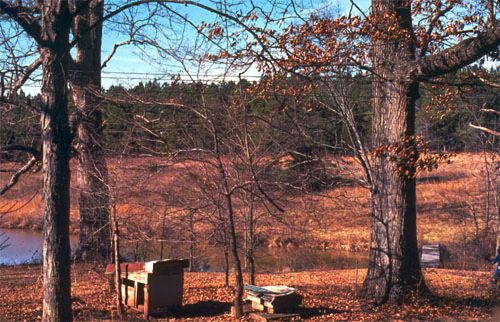
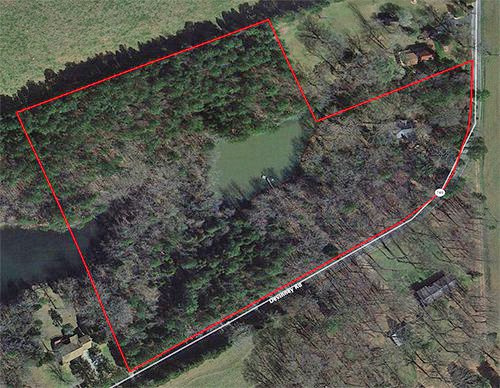
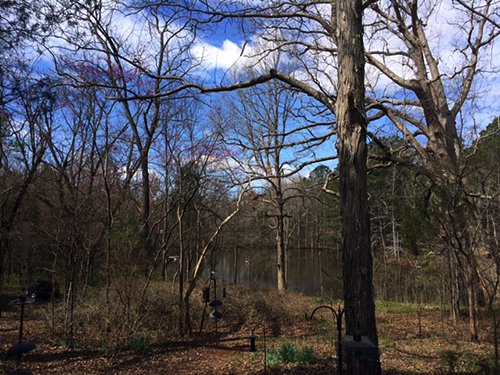
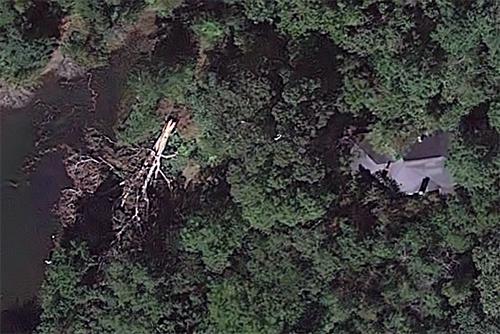

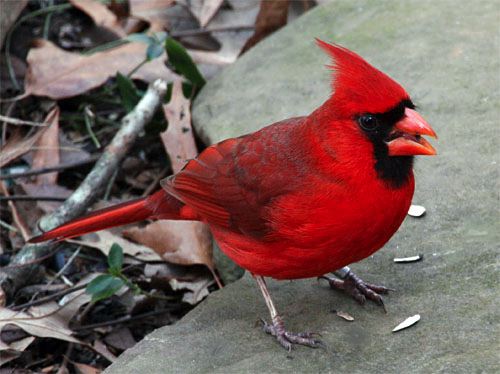
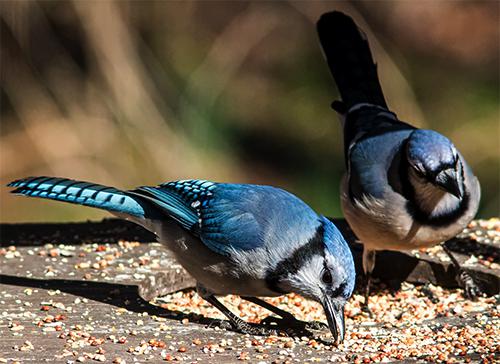




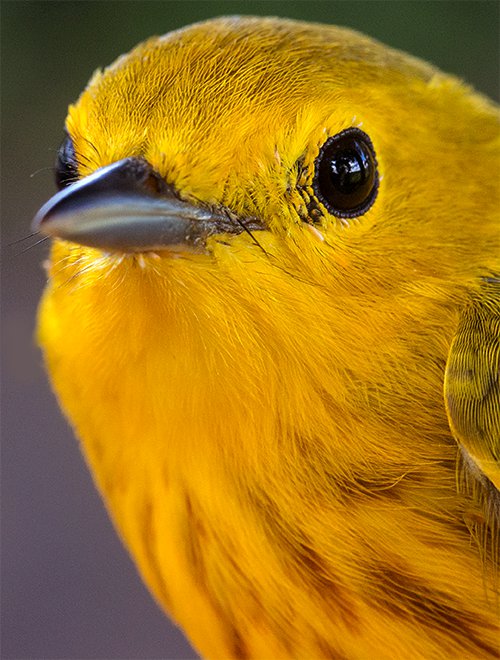

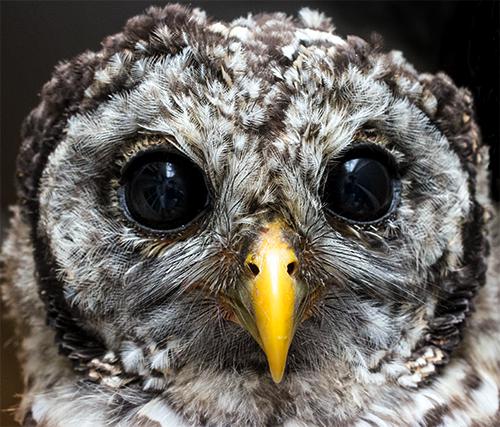






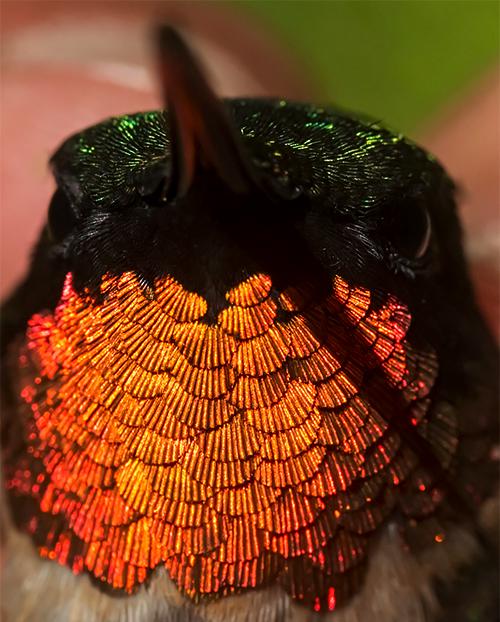
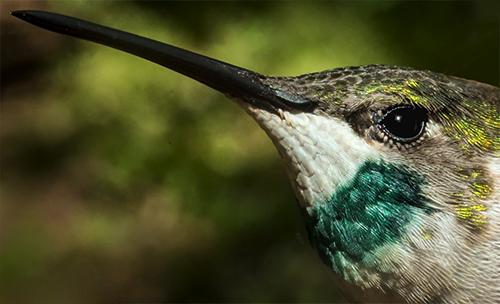

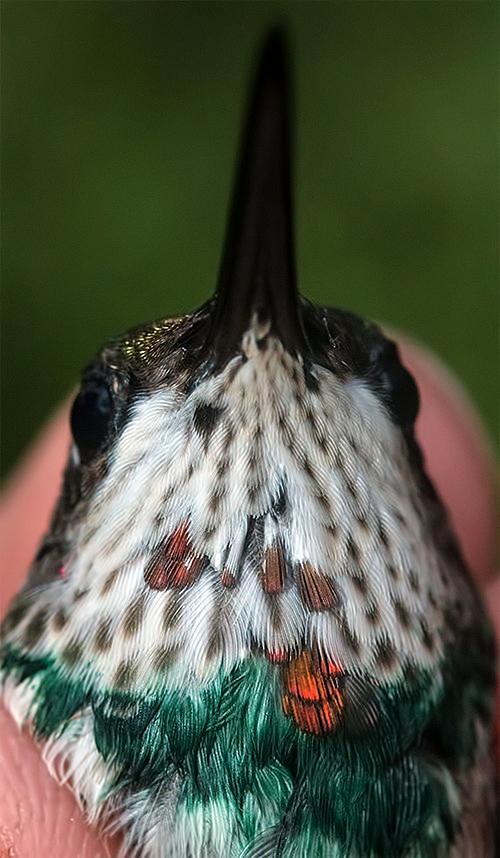

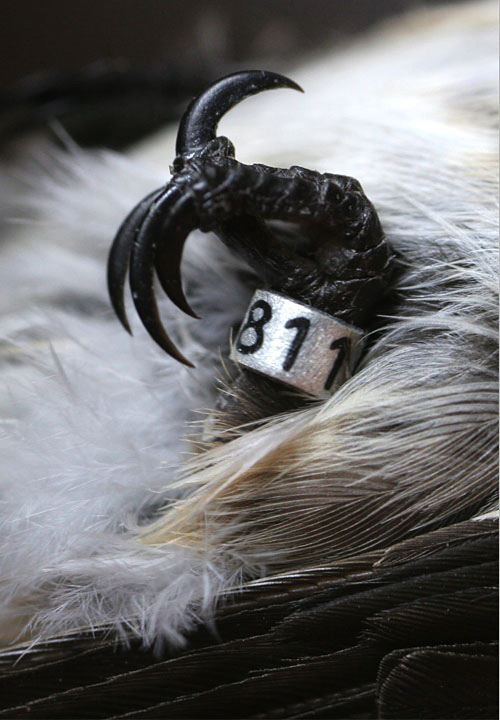

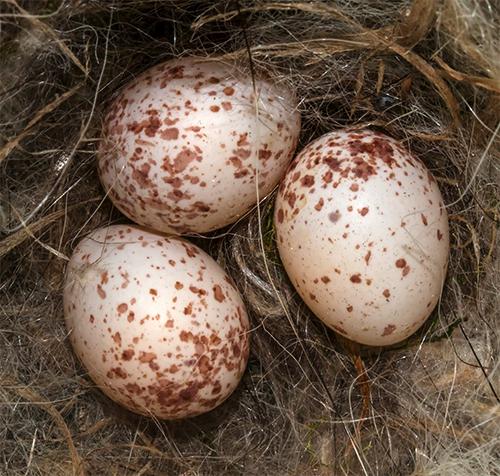
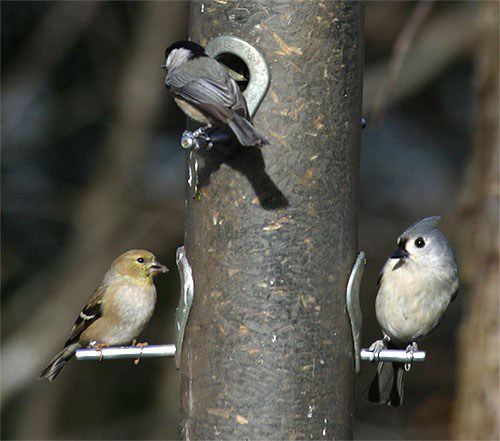








 Oct 15 to Mar 15:
Oct 15 to Mar 15: